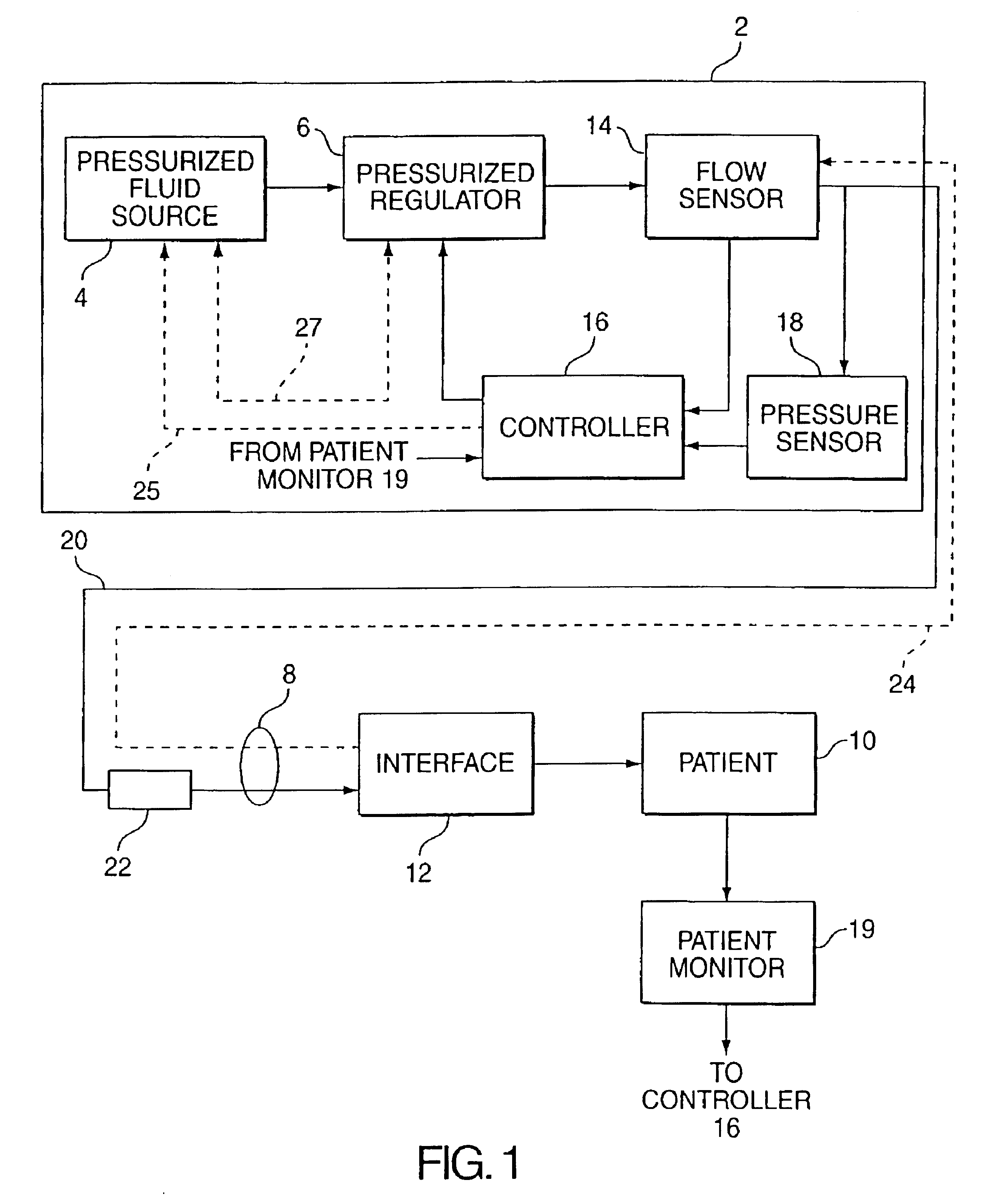Average volume ventilation
a technology of ventilation and volume, applied in the field of ventilators, can solve the problems of large changes in the volume of fluid delivered to the patient, unnatural variation in the volume of fluid, and discomfort for spontaneous breathing patients, and achieve the effect of reducing the difficulty of ventilating
- Summary
- Abstract
- Description
- Claims
- Application Information
AI Technical Summary
Benefits of technology
Problems solved by technology
Method used
Image
Examples
Embodiment Construction
[0022]FIG. 1 illustrates an exemplary embodiment of a pressure support system or ventilator 2 according to the principles of the present invention. As used herein, the term “ventilator” refers to any device that delivers a flow of breathing gas to a patient at a variable pressure, and is not intended to be limited to a life support ventilating system. An example of a pressure support system that provides a variable pressure to the patient based on patient's respiratory cycle that is not necessarily used for life support purposes is the pressure support system taught in U.S. Pat. Nos. 5,148,802 and 5,433,193, both to Sanders et al., the contents of which are incorporated by reference into the present application.
[0023]Ventilator 2 includes a source of pressurized fluid 4 and a pressure regulator 6 connected to receive pressurized fluid from source of pressurized fluid 4. Pressure regulator 6 regulates the pressure of the pressurized fluid supplied to a patient circuit 8, which convey...
PUM
 Login to View More
Login to View More Abstract
Description
Claims
Application Information
 Login to View More
Login to View More - R&D
- Intellectual Property
- Life Sciences
- Materials
- Tech Scout
- Unparalleled Data Quality
- Higher Quality Content
- 60% Fewer Hallucinations
Browse by: Latest US Patents, China's latest patents, Technical Efficacy Thesaurus, Application Domain, Technology Topic, Popular Technical Reports.
© 2025 PatSnap. All rights reserved.Legal|Privacy policy|Modern Slavery Act Transparency Statement|Sitemap|About US| Contact US: help@patsnap.com



